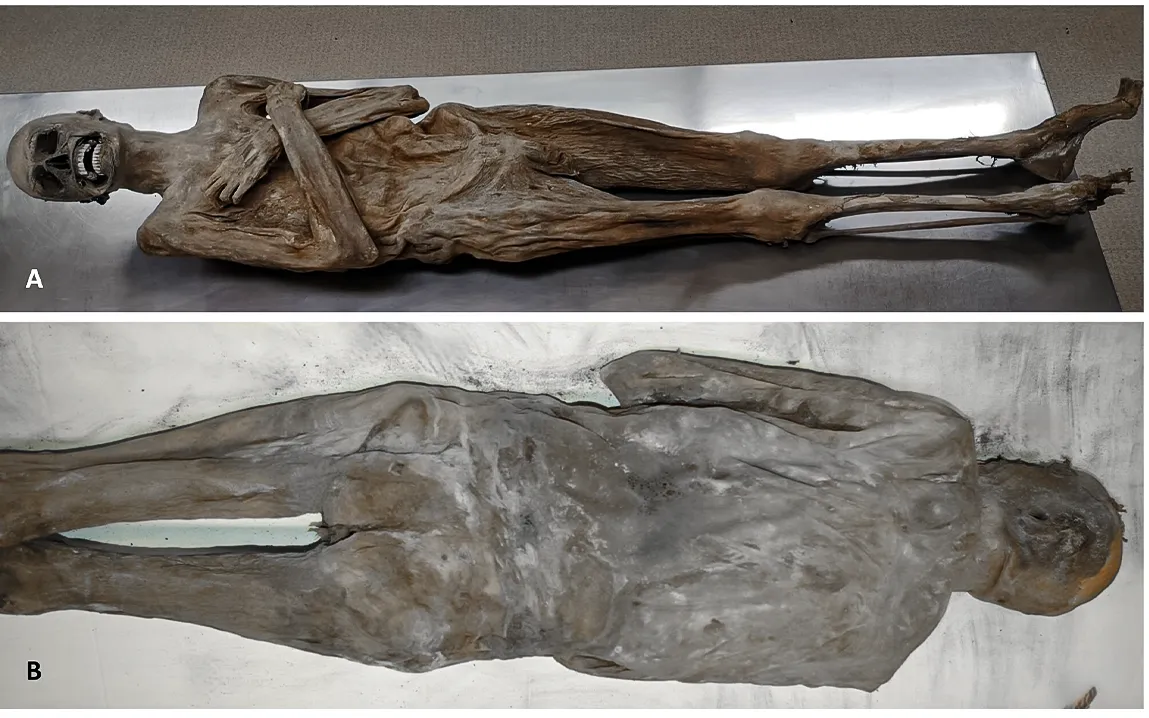These available materials, includiIn a remarkable discovery, scientists have identified a centuries-old mummy found in a church crypt in the Austrian village of St Thomas am Blasenstein as a local parish priest and uncovered a rare embalming method responsible for the body’s exceptional preservation.
According to a new study published in Frontiers in Medicine, the mummy is that of Franz Xaver Sidler von Rosenegg, a vicar who died in 1746. The international research team, led by Dr. Andreas Nerlich of Ludwig-Maximilians-Universität in Munich, found that Sidler’s remains were preserved using a technique not previously documented in scientific literature.
A Unique Approach
Unlike the age-old embalming process, where the body was opened in the process, the process entailed filling of the abdominal region via the rectum with absorptive materials, including wood shavings, twigs, and textiles. Researchers also detected traces of zinc chloride(a compound with strong drying properties), likely added to prevent internal decomposition.
“The excellent preservation status came from an unusual type of embalming,” Dr. Nerlich said. “Clearly, the wood chips, twigs, and dry fabric absorbed much of the fluid inside the abdominal cavity.”
ng fir and spruce shavings, different linen, hemp, and flax, were likely used in non-invasive embalming during the 18th century. This process likely helped to ensure that the top half of the mummy’s body remained preserved despite decay within the lower legs and head.
A Glimpse Into Forgotten Funeral Practices
The embalming technique discovered may have once been more common than historians realized. According to Nerlich, in cases where mummified remains are damaged, signs of this subtle preservation method could easily be missed.
“This type of preservation may have been much more widespread but unrecognized,” he explained. “In other cases, post-mortem decay might have masked evidence of such preparation.”
During the autopsy, the team also found a mysterious glass bead with holes on either end inside the body. Its purpose remains unclear, though researchers believe it may have been part of monastic clothing or decoration used during burial.
Confirming the Identity of the Mummy
Though local legend long claimed the mummy belonged to Sidler, the new study provided scientific confirmation. Using a combination of radiocarbon dating, isotopic analysis, and a study of his lifestyle indicators, researchers determined the man died between 1734 and 1780, matching Sidler’s known death in 1746.
Further evidence came from dietary markers, which pointed to a diet rich in grains, animal products, and possibly freshwater fish, consistent with the lifestyle of a priest in that region. Physical analysis of the skeleton showed little sign of hard labor but did reveal signs of tuberculosis and a long-term smoking habit.
A Burial with Unfinished Intentions
The embalming may have been part of an effort to transport Sidler’s body back to his home abbey. However, according to Nerlich, “possibly, the vicar was planned for transportation… which might have failed for unknown reasons.”
While much about the intentions behind the embalming remains speculative, the study sheds light on a previously undocumented funerary tradition, offering rare insight into 18th-century death rituals in rural Europe.



